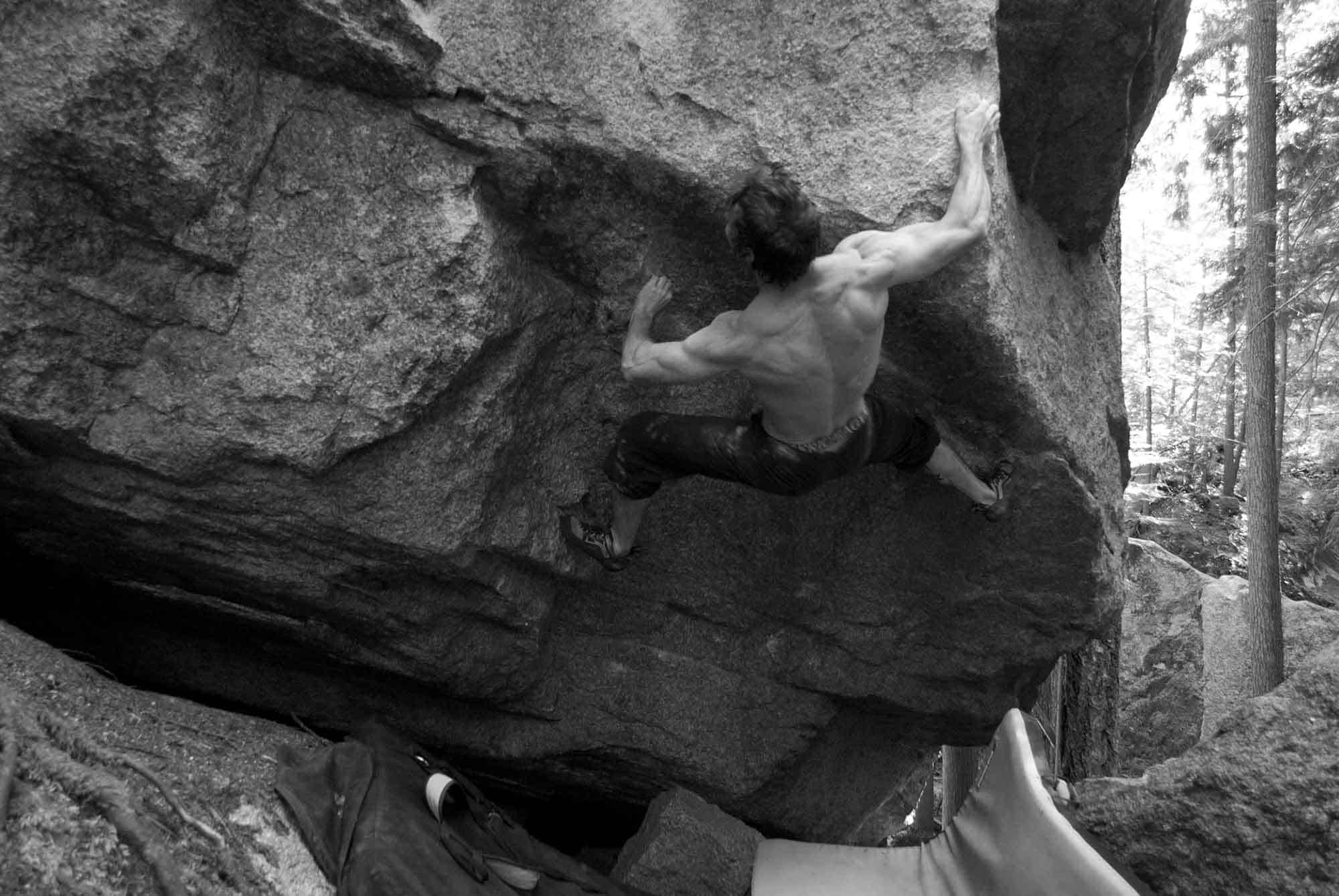This post came out of the Irrational Fitness archives, having first been published on April 28th, 2012. I updated it and modified it a little, but on the whole I believe the statements still hold true.
SHOULD WE JUST BE CLIMBING MORE?
Traditionally, the long standing rule for climbers was that the best way to improve at climbing, was simply to climb a lot. That was the solution: climb hard, and frequently. Sadly, for many of us in countries that experience winter, getting on rock all the time isn’t an option. As such, the gym climber was born, with its own host of limitations and issues. Is all we need to be doing more climbing to really push farther forward as climbers?
In the days prior to gym climbing, a 5.12 was hard. In the past decade, an entire new generation of climbers have been able to put in a huge amount of time honing their skills, and as a result have pushed the sport forward. The 5.12 grade range is no longer something reserved only for the worlds most elite climbers, but rather is something that is accessible to more and more people. Arguably, a focused individual who trains appropriately, should have no issue reaching well into the 13s.
The question that I have struggled with is whether simply more climbing is the best way to move the majority of people further forward in their climbing journey. I suspect that for many people, it is not the best solution. Easy access to a space with limited guidance seems to be a breeding ground for inefficient movements, and with an increase in mileage without any kind of focus or planning, a host of injuries have developed that might have been avoidable. It would seem, that while climbing gyms do allow people to improve their climbing, that the lack of focus or intention to how people use that space largely sets people up more for injury than actual improvement.
The boys have joked that I perhaps have swung too far to the other side, with far less actual climbing in my training for climbing than is at all reasonable. My only counter to that which I am left with is that I am retired, and now just approach climbing as a great space to harass my friends and eat pie. However, as a coach, my aim is to give people the gains in strength, flexibility, gripping power, and overall muscular endurance that they need to break into these harder, and far more rewarding climbing grades. However, beyond that, the real goal is to minimize the likelihood of getting injured in training for climbing. The huge amount of volume that people can now put on their bodies in a climbing gym leaves climbers horribly imbalanced and prone to a host of injuries. A big part of training for climbing needs to be focused on ensuring balance throughout the body so people are not side lined for entire seasons with nagging injuries.
We have to minimize the likelihood of getting injured in training for climbing.

Intention is everything
I am going to be the first one to say that training should be fun, that we should look forward to it. However, quite often it is easy to get stuck in the attitude of needing to succeed at climbing a problem in the gym (or for that matter outdoors), regardless of how well we do it. I think this is one of the great lost opportunities in climbing of all kinds. I would say a desperate finish of a climb doesn’t teach us anything. The goal should be to find how to unlock the movement puzzle that a climb offers, and determine how to do it the most efficiently, using the minimal amount of effort required to complete a problem. Every nuance of footwork and body positioning is a chance to hone our climbing skills. I think that we would all benefit from a greater degree of intention in our climbing. If the betterment of a skill, or an improvement in movement quality becomes the goal, our entire approach to how we climb can shift towards one that will let us move far further in the long run.
I certainly don’t have all the answers when it comes to the best methods of training climbers. I do however think that understanding how effective movement patterns can reduce injury risk, and improve our climbing, can go a long way to lengthening our climbing careers. If you are interested in what might be limiting your climbing, or what might be keeping you from moving forward, drop me a note or come visit the facility.
